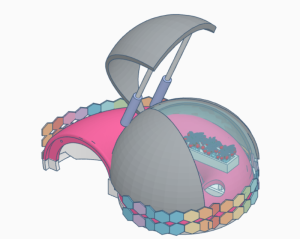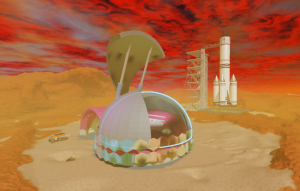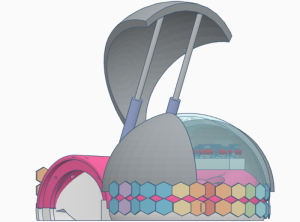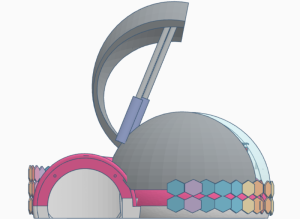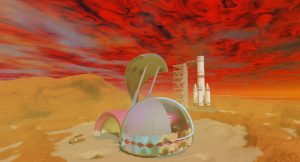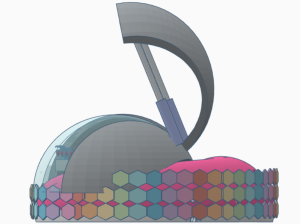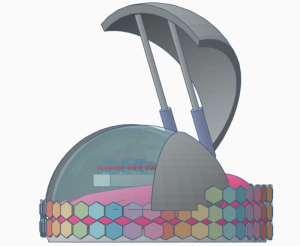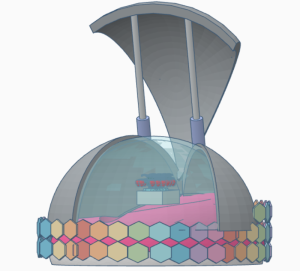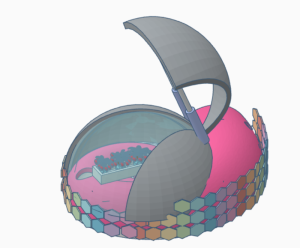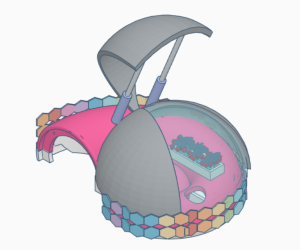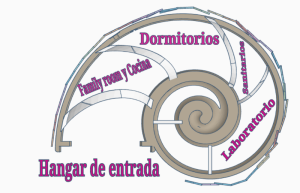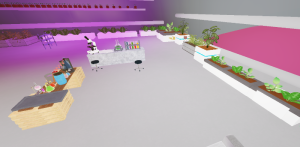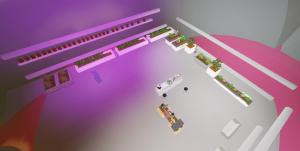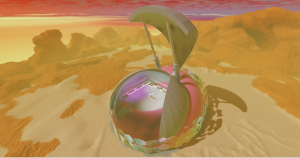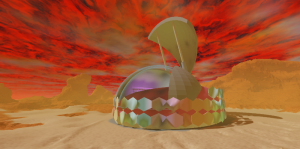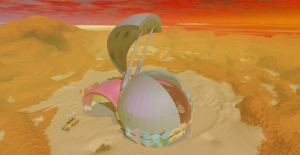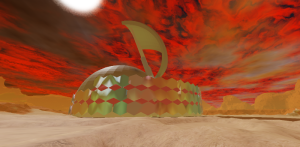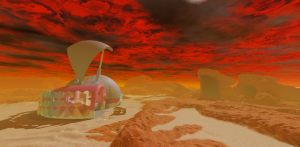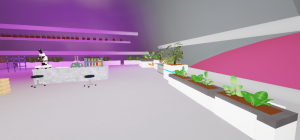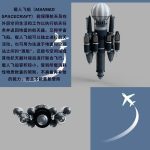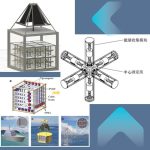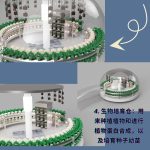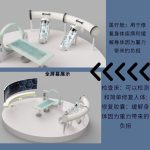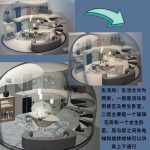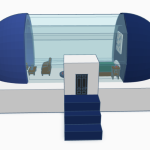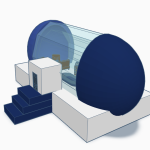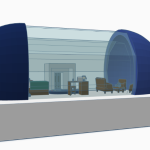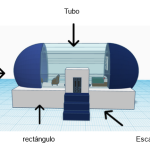Domo Espacial Aurora by Space Dreams
Fire Hunters Ciudad de México-México Mexico 8 years old 1 / 1 Spanish Mars
External link for Tinkercad 3D design
Project description
Proyecto de Hábitat en Marte: Domo Espacial Aurora
Finalidad del Hábitat:
El Domo Espacial Aurora tiene como objetivo servir como un entorno habitable y
autosuficiente para la exploración y colonización de Marte. Proporcionará refugio y
recursos para sus habitantes, además de funcionar como centro de investigación científica
y punto de partida para misiones de exploración en la superficie marciana. En él se estudiará
la geología marciana, la composición atmosférica, la búsqueda de vida pasada o presente,
y la producción de recursos a partir de los materiales disponibles en Marte. Incluirá equipos
de laboratorio, instrumentos de muestreo, sistemas de monitorización ambiental, de
comunicación, de observación astronómica y materiales para la construcción y
mantenimiento del hábitat.
Concepto Central:
En el corazón del Domo Espacial Aurora late la EcoBioWall, una maravilla de la ingeniería
que transforma los residuos humanos en recursos vitales para la vida en Marte. Esta
membrana bio sensible recubre cada centímetro del hábitat, no solo regulando la
temperatura y distribuyendo el agua a cualquier lugar que se necesite, sino también
creando un ambiente acogedor y sostenible para sus habitantes. La EcoBioWall no solo
recoge los residuos, sino que también monitoriza constantemente los signos vitales de los
tripulantes, enviándolos a la cabina médica para registro y creación de tratamientos
personalizados.
Un paisaje interior que parece cobrar vida, donde las paredes se adaptan al entorno. Esta
es la visión del EcoBioWall, una delgada capa con una apariencia translúcida que permite
ver su funcionamiento interno. Su diseño está inspirado en las células vivas y está
compuesto por materiales biocompatibles y resistentes, como polímeros biodegradables y
nanotubos de carbono.
Sostenibilidad a Largo Plazo:
Otro aspecto destacado del Domo Espacial Aurora son los paneles pentagonales que
rodean su exterior. Estos paneles, llamados Guardianes Solares, no solo convierten la
radiación solar en energía, sino que también lo resguardan de posibles amenazas externas.
Además, estos paneles pueden desplazarse individualmente o en conjunto para
proporcionar vistas al exterior o al firmamento, y pueden cambiar de color para adaptarse
o reflejar su entorno. La energía recolectada se concentrará en baterías de almacenamiento
de alta capacidad, ubicadas en la base del hábitat, asegurando un suministro perpetuo de
energía. La reserva de agua se encuentra en depósitos subterráneos excavados bajo la
estructura y tendrá conexión con la EcoBioWall. Estos depósitos estarán revestidos con
materiales impermeables y equipados con sistemas de purificación y reciclaje de agua para
garantizar su disponibilidad y calidad.
Distribución Interna:
El mayor compromiso es cuidar el bienestar físico y emocional de los pioneros espaciales
por lo que el interior del hábitat estará dividido en varias áreas funcionales, incluyendo
zonas de vida, trabajo, investigación y ocio con capacidad para 6 personas. Contará con
habitaciones, cocina, laboratorio, hub de mando e impresión 3D, área médica, invernadero,
gimnasio y áreas de recreación, y servicios sanitarios. Es un hogar y a la vez un centro de
descubrimiento y exploración, por lo que también incorpora un hangar para Rovers.
Ubicación:
El hábitat será asentado en las llanuras cercanas al ecuador marciano, donde las
temperaturas y la radiación son más moderadas, y es más probable la presencia de agua
subterránea.
La construcción del domo se realizará en etapas, utilizando la tecnología de impresión 3D
incorporada al hábitat y los recursos disponibles como el regolito marciano.
Expansión y Conectividad:
La forma externa del Domo Espacial Aurora, basada en la proporción áurea, permite su
acoplamiento con otros módulos habitacionales y de investigación.
Project link
https://mikellagamborino.my.canva.site/mooncamp
English translation
Mars Habitat Project: Aurora Space Dome
Habitat Purpose:
The Aurora Space Dome is intended to serve as a habitable environment and
self-sufficient for the exploration and colonization of Mars. It will provide shelter and
resources for its inhabitants, in addition to functioning as a scientific research center
and starting point for exploration missions on the Martian surface. It will be studied
Martian geology, atmospheric composition, the search for past or present life,
and the production of resources from the materials available on Mars. Will include equipment
laboratory, sampling instruments, environmental monitoring systems,
communication, astronomical observation and materials for construction and
habitat maintenance.
Central Concept:
At the heart of the Aurora Space Dome beats the EcoBioWall, an engineering marvel
that transforms human waste into vital resources for life on Mars. This
bio-sensitive membrane covers every centimeter of the habitat, not only regulating the
temperature and distributing the water to any place it is needed, but also
creating a welcoming and sustainable environment for its inhabitants. The EcoBioWall not only
collects waste, but also constantly monitors the vital signs of the
crew members, sending them to the medical cabin for registration and creation of treatments
personalized.
An interior landscape that seems to come to life, where the walls adapt to the environment. This
is the vision of the EcoBioWall, a thin layer with a translucent appearance that allows
See its inner workings. Its design is inspired by living cells and is
composed of biocompatible and resistant materials, such as biodegradable polymers and
Carbon nanotubes.
Long Term Sustainability:
Another highlight of the Aurora Space Dome is the pentagonal panels that
surround its exterior. These panels, called Solar Guardians, not only convert the
solar radiation into energy, but also protect it from possible external threats.
Additionally, these panels can move individually or together to
provide views of the outdoors or the sky, and can change color to suit
or reflect your environment. The collected energy will be concentrated in storage batteries
high capacity, located at the base of the habitat, ensuring a perpetual supply of
energy. The water reserve is found in underground tanks excavated under the
structure and will have connection with the EcoBioWall. These tanks will be lined with
waterproof materials and equipped with water purification and recycling systems to
guarantee its availability and quality.
Internal Distribution:
The greatest commitment is to take care of the physical and emotional well-being of the space pioneers
so the interior of the habitat will be divided into several functional areas, including
living, working, research and leisure areas with capacity for 6 people. It will have
rooms, kitchen, laboratory, command hub and 3D printing, medical area, greenhouse,
gym and recreation areas, and health services. It is a home and at the same time a center of
discovery and exploration, which is why it also incorporates a hangar for Rovers.
Location:
The habitat will be located in the plains near the Martian equator, where the
temperatures and radiation are more moderate, and the presence of water is more likely
underground.
The construction of the dome will be carried out in stages, using 3D printing technology
incorporated into the habitat and available resources such as the Martian regolith.
Expansion and Connectivity:
The external shape of the Aurora Space Dome, based on the golden ratio, allows its
coupling with other housing and research modules.
#3D Design #Scientific Experiments
Other Projects
Energy harvesting and scientific research
Unidad de producción de energía solar
Alhaurín de la Torre – Spain



